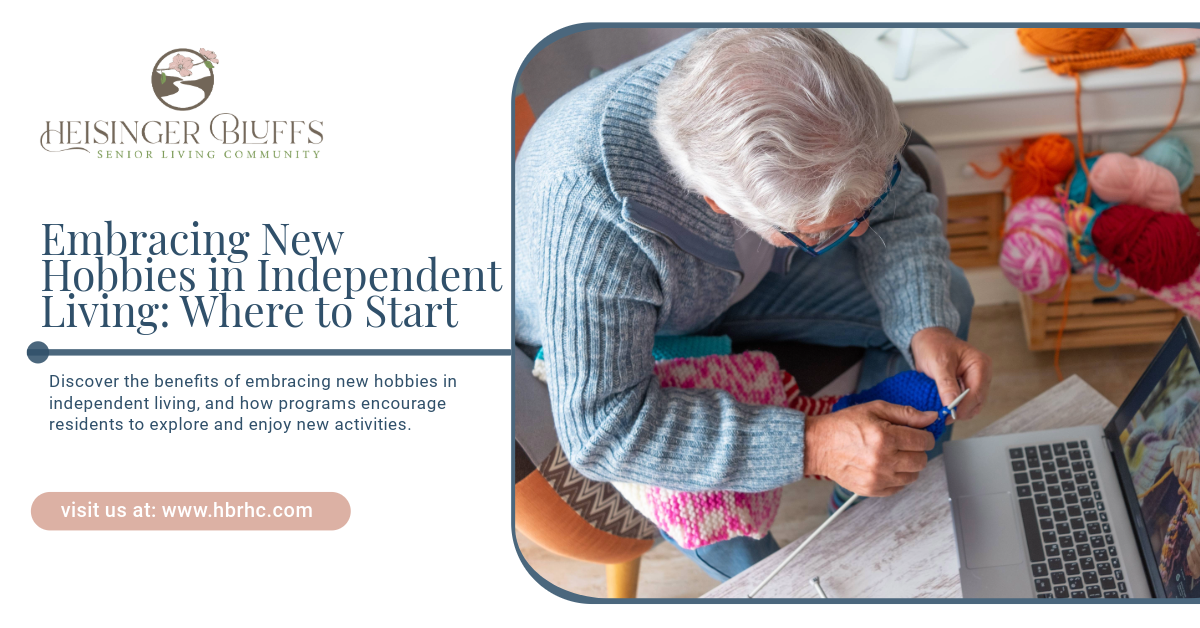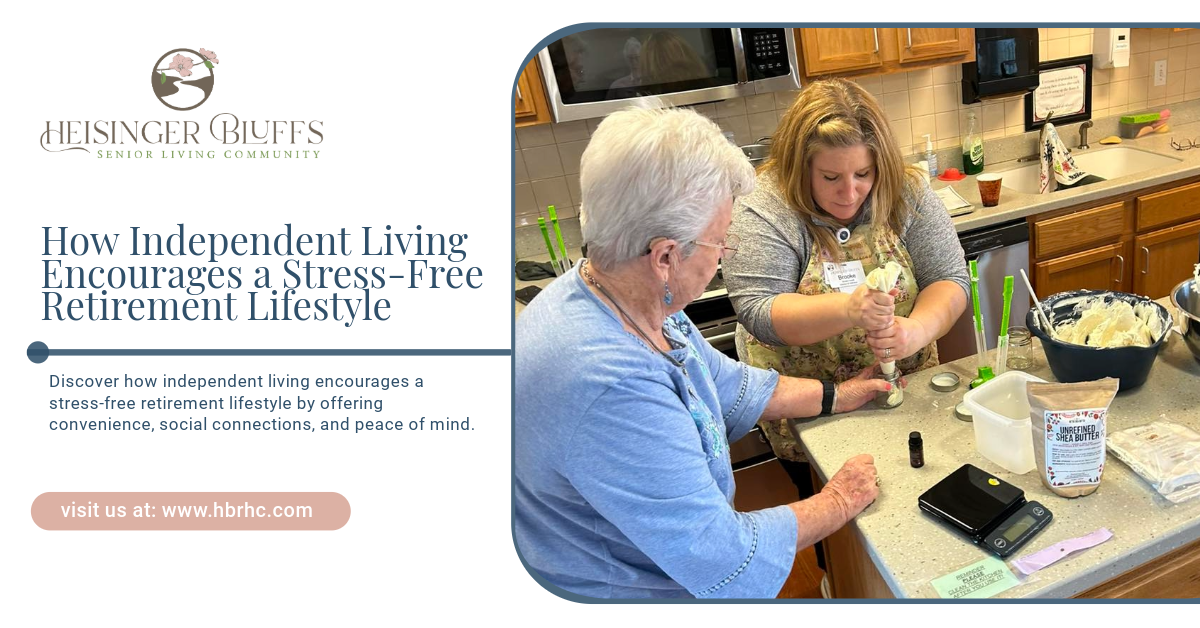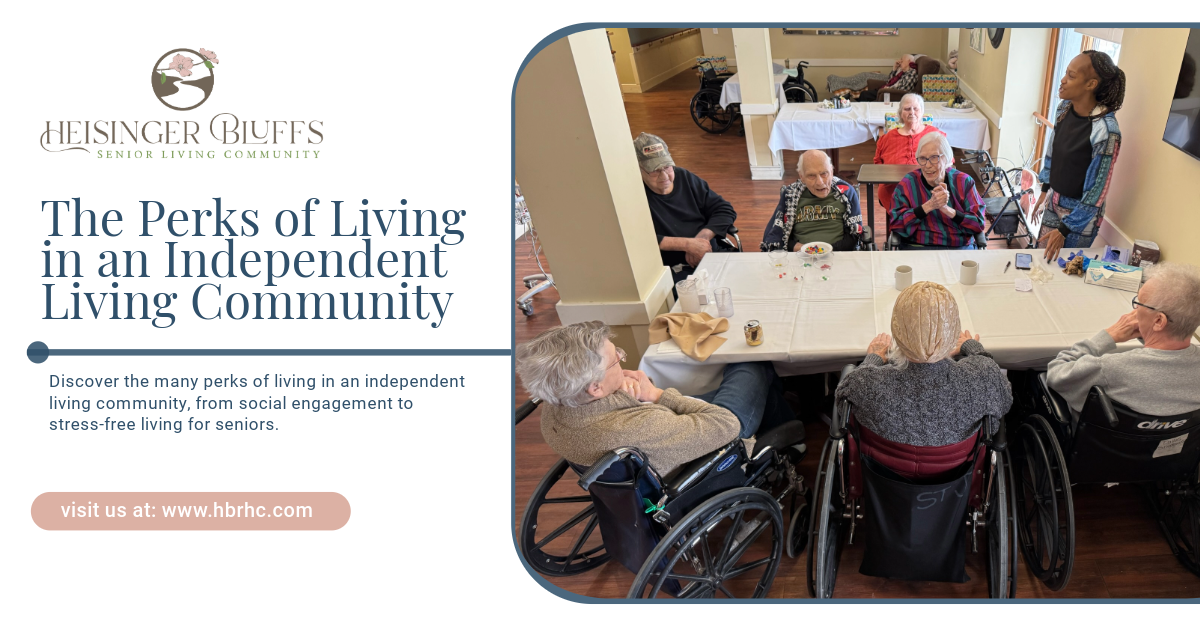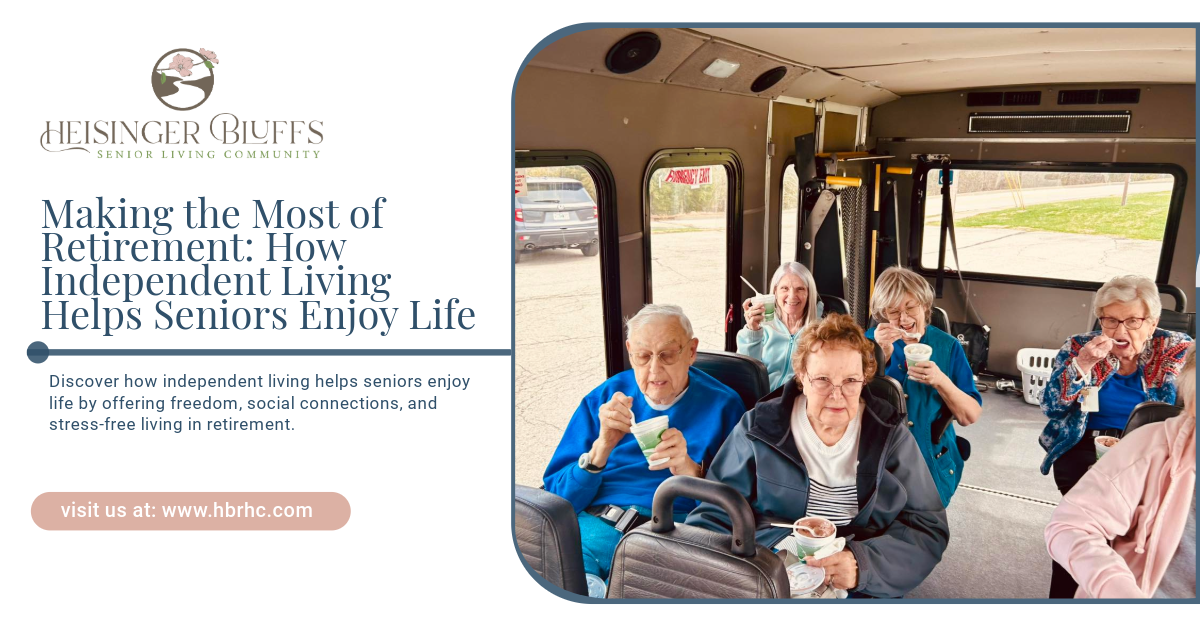Get in touch
Embracing New Hobbies in Independent Living: Where to Start

As we age, it’s easy to fall into routines that provide comfort and familiarity. However, retirement and independent living present the perfect opportunity to embrace new hobbies and rediscover forgotten passions. Not only do hobbies keep the mind sharp and the body active, but they also provide a sense of purpose and fulfillment. For residents in independent living communities, the chance to try new activities and develop fresh skills is a key part of maintaining an enriching and engaged lifestyle.
Independent living communities offer a wealth of opportunities for residents to explore new interests, from arts and crafts to fitness classes and group activities. This guide will explore the many benefits of trying new hobbies in independent living and how these programs encourage residents to step out of their comfort zones and experience the joy of lifelong learning.
The Importance of New Hobbies in Independent Living
Hobbies are not just for entertainment—they offer many physical, emotional, and mental health benefits, especially for seniors. Engaging in new activities stimulates the brain, reduces stress, and can even improve overall well-being. Here are some reasons why trying new hobbies in independent living is essential:
- Cognitive Stimulation:
Learning a new skill or hobby challenges the brain in different ways, helping to keep cognitive function sharp. Activities that involve memory, problem-solving, or strategy (such as learning a musical instrument, solving puzzles, or taking up painting) stimulate brain activity and may reduce the risk of cognitive decline. - Physical Health Benefits:
Many hobbies involve physical movement, which is important for maintaining health and mobility in older age. Activities like gardening, walking groups, or yoga not only strengthen muscles and improve balance but also boost cardiovascular health. - Social Interaction:
Independent living communities often promote hobbies through group activities, classes, and clubs. These provide excellent opportunities for social interaction, helping residents form friendships, share experiences, and stay connected with others. This social engagement is critical for emotional well-being, reducing feelings of loneliness and isolation. - Emotional Well-being:
A fulfilling hobby can bring a sense of achievement and purpose, contributing to emotional satisfaction. Whether it’s creating art, writing, or playing an instrument, the act of creating something or improving at a skill brings a unique joy that enhances one’s emotional resilience and outlook. - Stress Relief:
Hobbies can be therapeutic. Activities like knitting, drawing, or birdwatching allow for relaxation and focus, helping reduce stress and anxiety. The repetitive nature of some hobbies is meditative, helping residents unwind and feel more centered.
Starting a New Hobby in Independent Living
For residents in independent living communities, starting a new hobby can be an exciting experience, but it can also feel a little daunting at first. It’s essential to find activities that suit individual interests and abilities, while also leaving room for exploration and discovery.
Here are some steps to get started:
1. Explore Interests and Passions
Begin by reflecting on current interests or hobbies that have been put on the back burner. Perhaps there’s an activity you’ve always wanted to try but never had the time for, such as painting, pottery, or gardening. Independent living communities often offer classes and workshops that allow residents to explore new hobbies in a relaxed, supportive environment. From arts and crafts to cooking and gardening, there’s something for everyone.
2. Join a Group or Club
Many independent living programs feature clubs and groups where residents can meet like-minded individuals who share the same interests. Whether it’s a book club, knitting group, or chess club, these groups provide a wonderful way to make friends while exploring a shared hobby.
If your community doesn’t have a group for your specific interest, consider starting one! There’s likely someone else who shares your passion and would love to join in.
3. Start Small
If you’re new to a hobby or unsure of your interests, start small. Try taking a beginner’s class in something that sparks your curiosity. Starting with something simple, such as a weekly drawing class or a short walk in the community garden, can be an excellent way to ease into new activities without feeling overwhelmed.
4. Stay Open to New Experiences
It’s common for people to assume they’re “too old” to start something new, but this couldn’t be further from the truth. Independent living communities foster an environment where residents are encouraged to try new things without fear of judgment. Even if you’ve never painted before or picked up a musical instrument, give it a shot! You might discover a hidden talent or a new passion.
5. Make It Routine
Consistency is key to mastering any new hobby. Once you find something you enjoy, make it a part of your routine. Dedicate a set time each week to your hobby, whether it’s an hour of reading, a daily walk, or a regular art class. Having hobbies as part of your weekly schedule can bring a sense of structure and purpose, which is essential for maintaining overall well-being.
Popular Hobbies to Try in Independent Living
If you’re unsure where to start, here are some popular hobbies that many seniors in independent living communities enjoy:
1. Arts and Crafts
Creative hobbies such as painting, knitting, pottery, and crafting are incredibly popular in senior living communities. These activities provide a fantastic way to express creativity while also developing fine motor skills. Many communities offer organized arts and crafts classes, so you can explore your creativity in a fun and social setting.
2. Gardening
For those who enjoy spending time outdoors, gardening is a rewarding and peaceful hobby. Whether tending to flowers, growing vegetables, or simply enjoying the fresh air, gardening offers physical exercise and a connection with nature. Independent living communities often have gardens where residents can plant and care for their own plots, making it an ideal hobby for green thumbs.
3. Music
Learning to play a musical instrument or joining a choir can be both a fun and intellectually stimulating experience. Music engages various parts of the brain, improving memory and cognitive function. Whether you’re a seasoned musician or a beginner, independent living communities often have music programs or opportunities to participate in concerts and performances.
4. Fitness and Exercise Classes
Staying active is essential for physical health, and many communities offer a range of fitness classes. From yoga and tai chi to water aerobics and walking groups, there’s an activity to suit every fitness level. Exercise hobbies help residents maintain mobility, improve balance, and enhance overall physical health.
5. Cooking Classes
For food enthusiasts, cooking classes offer a delicious and educational way to explore new cuisines and cooking techniques. Many communities offer classes that focus on healthy recipes, dietary restrictions, and creative ways to prepare meals. Cooking is not only a practical skill but also a fun way to bond with fellow residents over a shared love of food.
6. Puzzles and Games
Keeping the mind sharp is just as important as staying physically active. Hobbies like puzzles, chess, card games, and board games help stimulate the brain and improve memory, logic, and problem-solving skills. Independent living communities often have game nights or puzzle rooms where residents can come together for some friendly competition.
7. Technology and Learning
In today’s digital age, many seniors are embracing technology as a new hobby. Learning how to use smartphones, tablets, and computers can open up a world of possibilities, from video calls with family to exploring online classes or virtual museum tours. Some communities even offer technology classes to help residents navigate the digital world.
The Role of Independent Living Communities in Supporting Hobbies
One of the greatest benefits of independent living communities is the access to programs and services designed to support residents in exploring new hobbies. These communities provide a variety of opportunities to learn, grow, and engage with others through:
- Scheduled Classes and Workshops: Residents have access to a range of organized classes, from painting to fitness. These classes are often tailored to different ability levels and interests, ensuring there’s something for everyone.
- Community Spaces: Common areas such as art studios, game rooms, libraries, and gardens provide residents with the space they need to enjoy their hobbies in a relaxing environment.
- Encouragement of Social Interaction: Independent living communities foster a sense of belonging through group activities, clubs, and social events that encourage residents to connect with others who share similar interests.
- Support for Individual Growth: Staff members and activity coordinators are dedicated to helping residents discover new passions, offering assistance and resources to make their hobbies more enjoyable.
Conclusion
Exploring new hobbies is one of the many joys of living in an independent living community. Whether you’re looking to learn something new, meet others with shared interests, or simply find a new way to spend your time, there’s no shortage of activities to try. Independent living offers the freedom to explore hobbies that bring joy, fulfillment, and a sense of purpose, all while maintaining a rich social life.
At Heisinger Bluffs, we offer a wide range of programs and activities designed to support our residents in discovering new hobbies and passions. Our independent living community is a place where you can continue to grow, learn, and enjoy life to the fullest.
Frequently Asked Questions



Want to know more?
We will get back to you as soon as possible.
Please try again later.
You May Also Like To Read
Heisinger Bluff’s Life Plan Community is here to make your senior years safe, stimulating and enjoyable so that you can savor the present, knowing the future will be taken care of.
QUICK LINKS
CONTACT
©2024. Heisinger Bluffs. All rights reserved.








